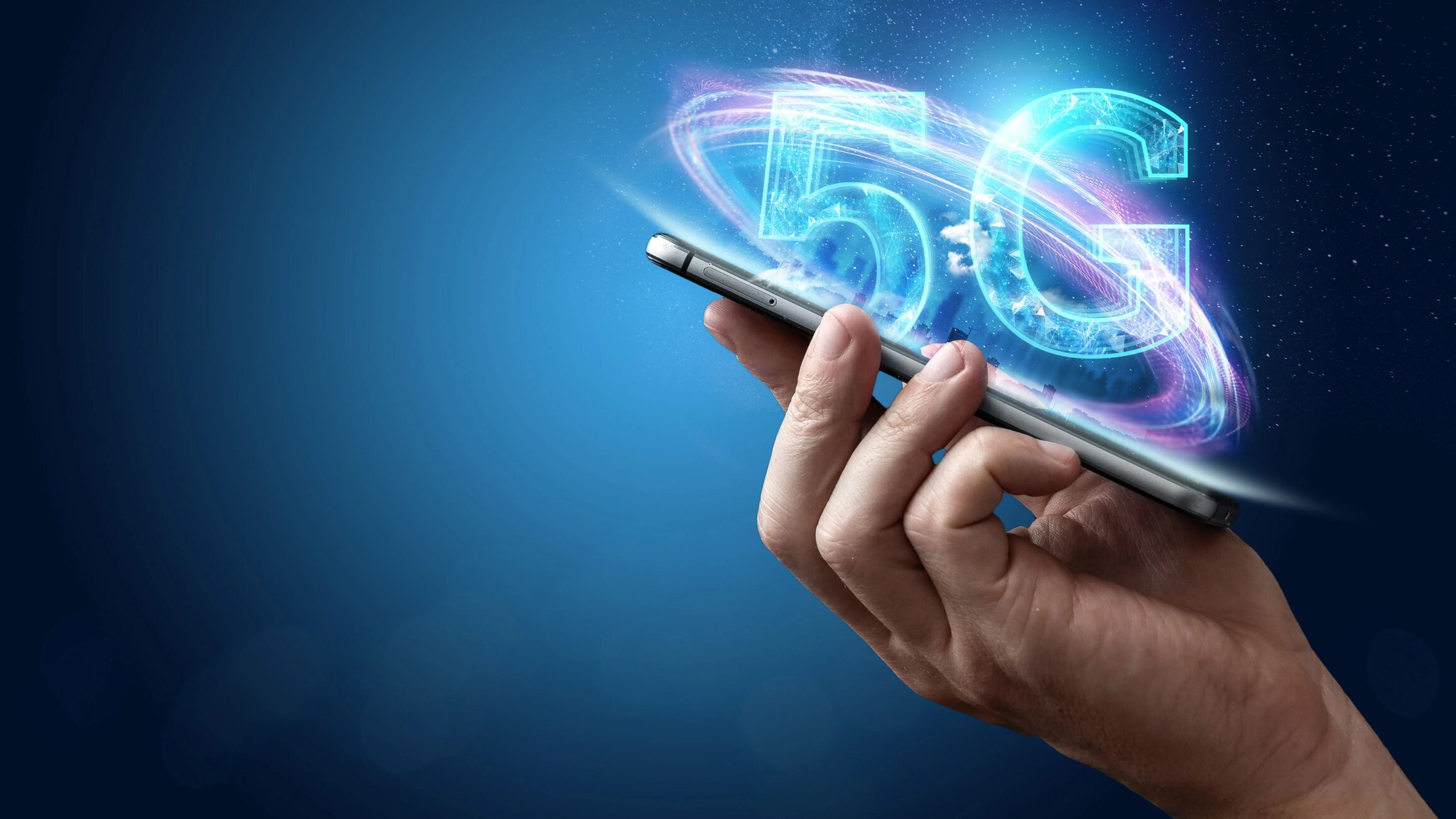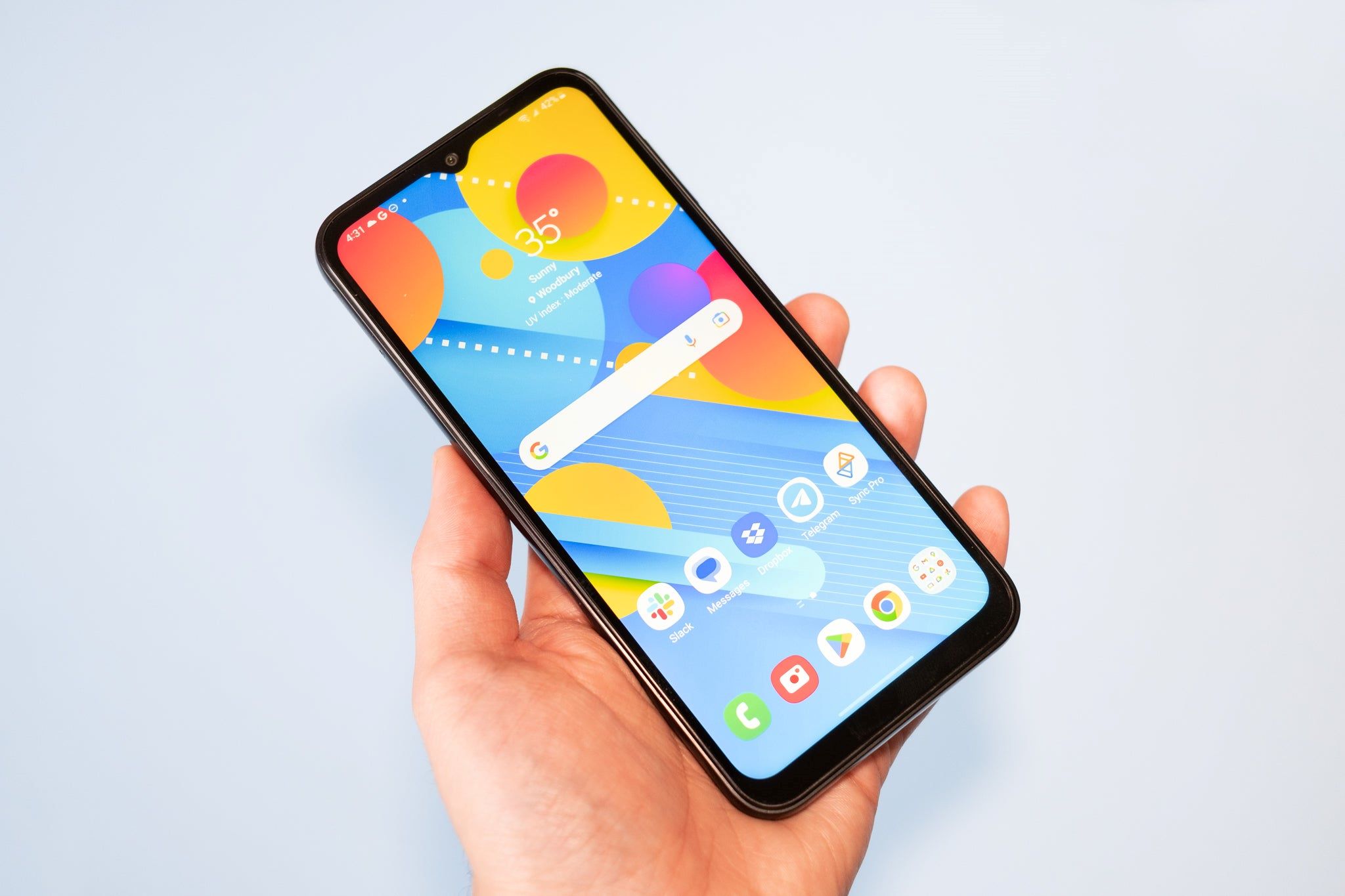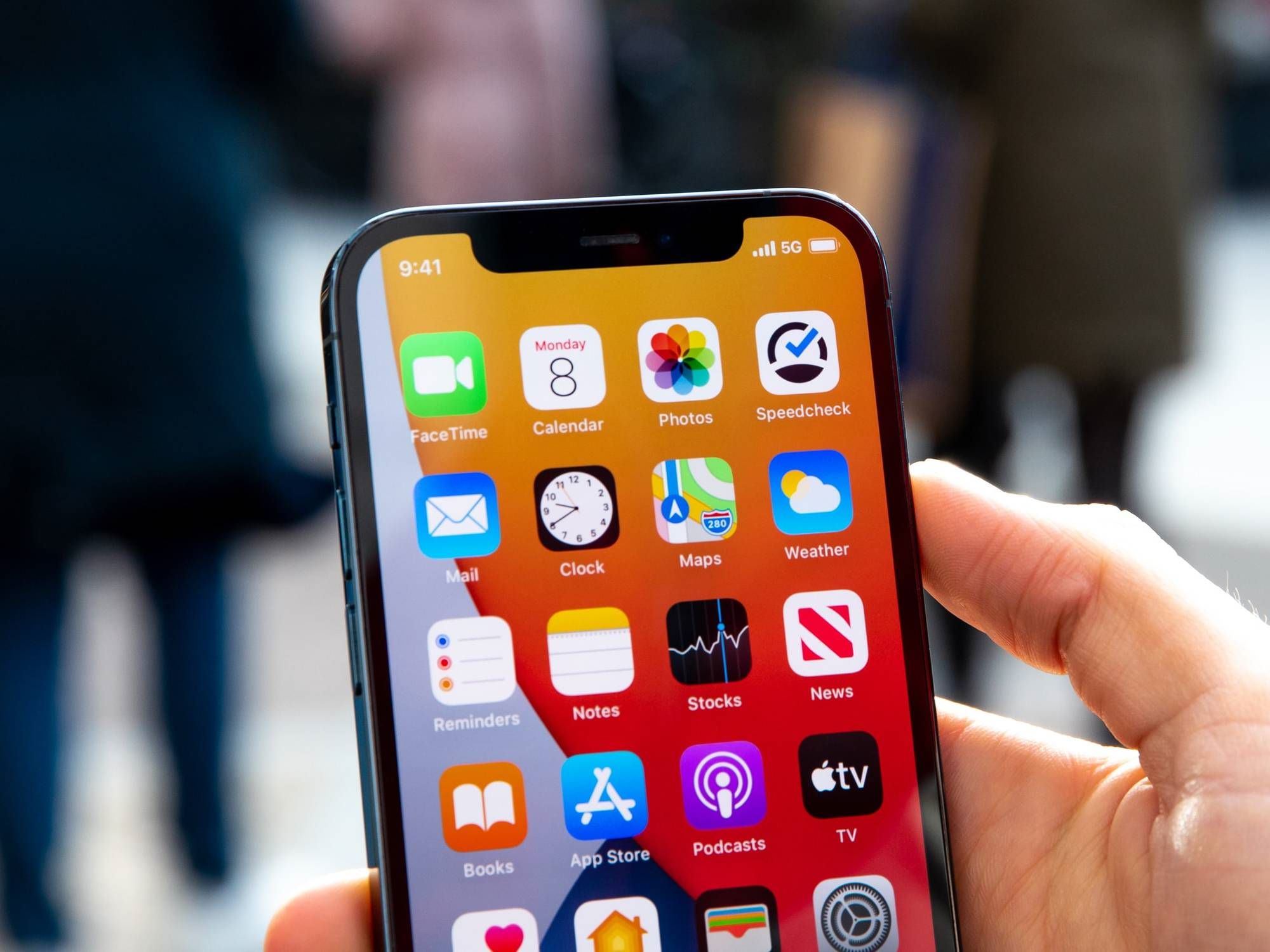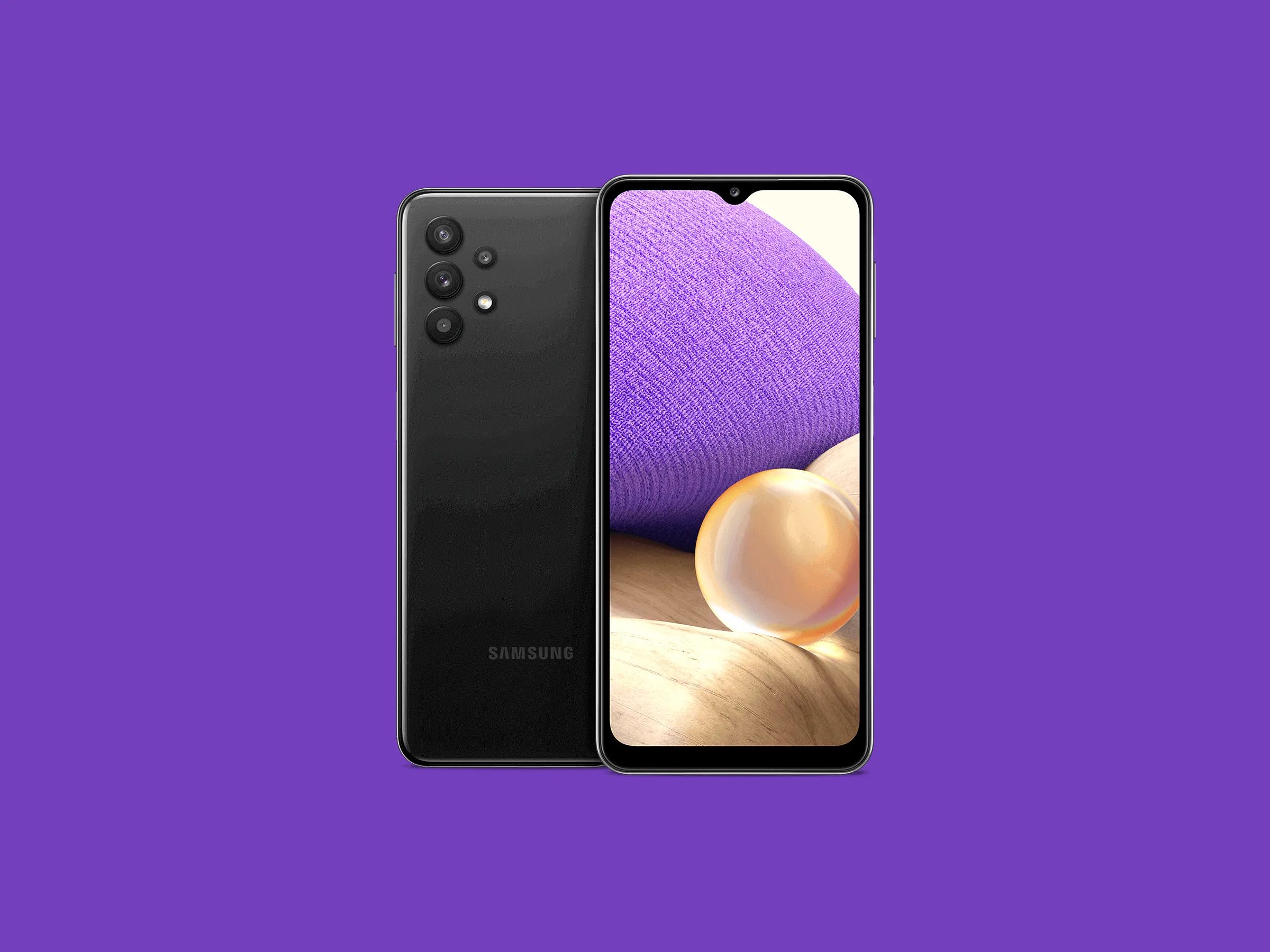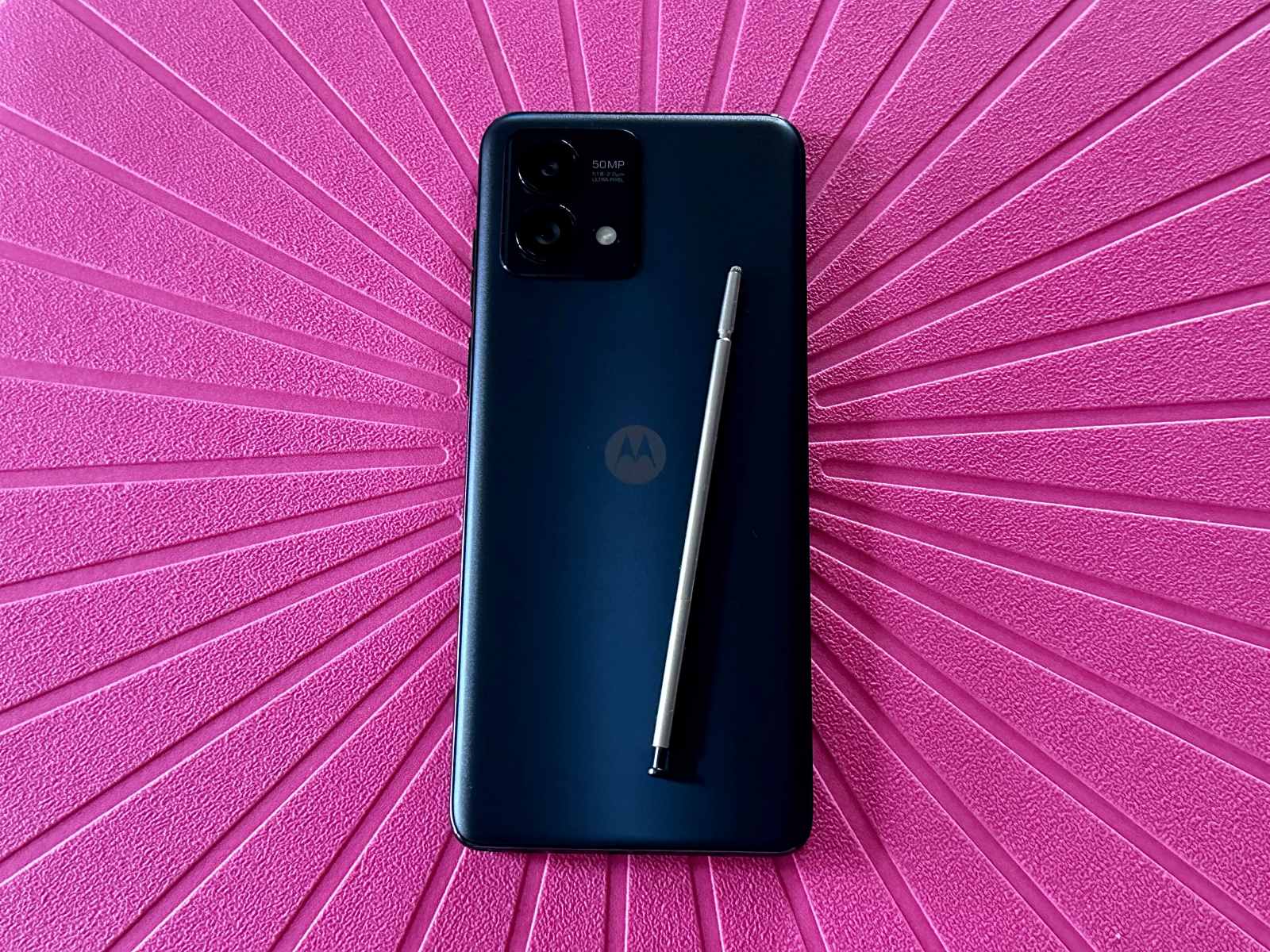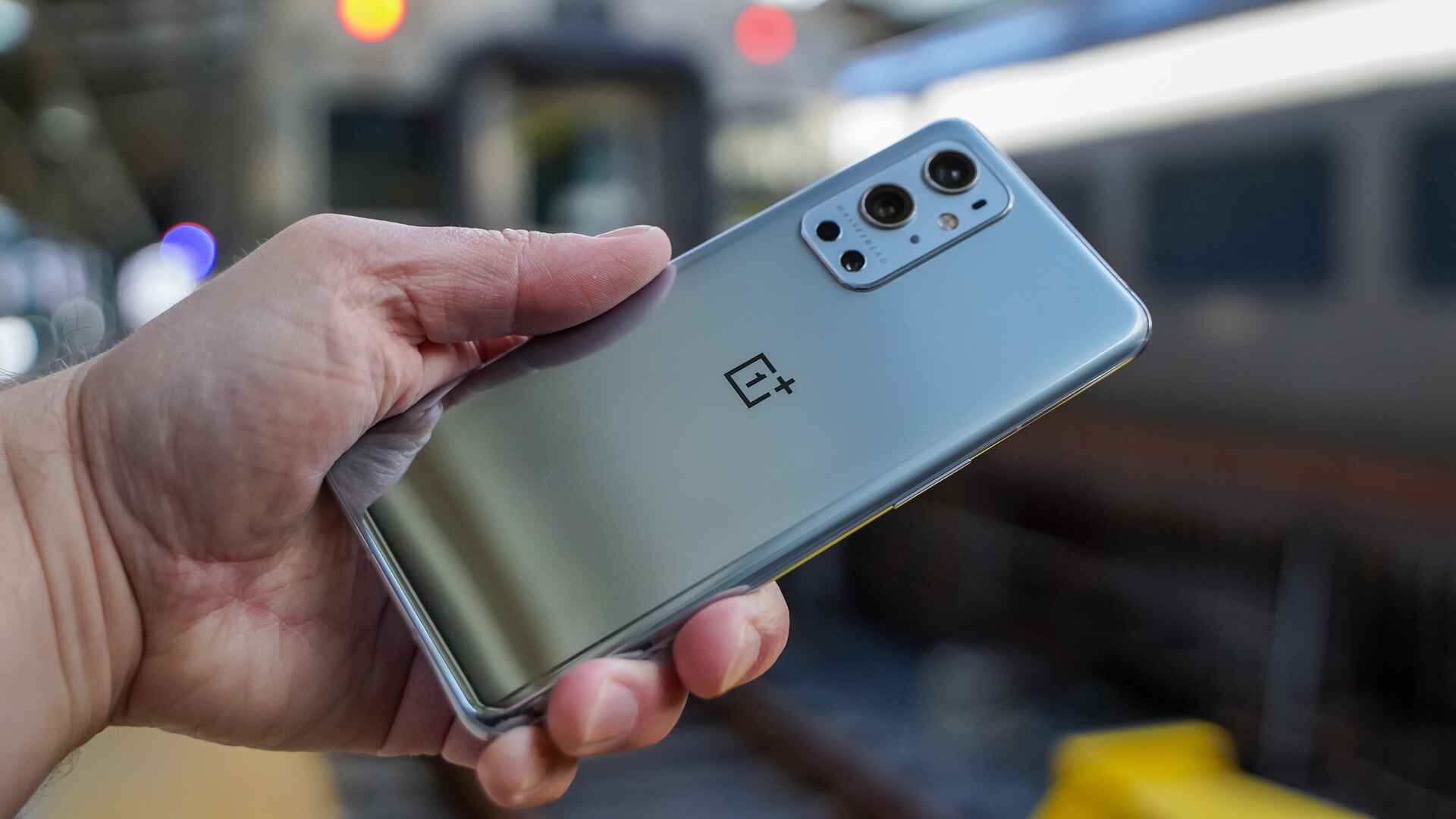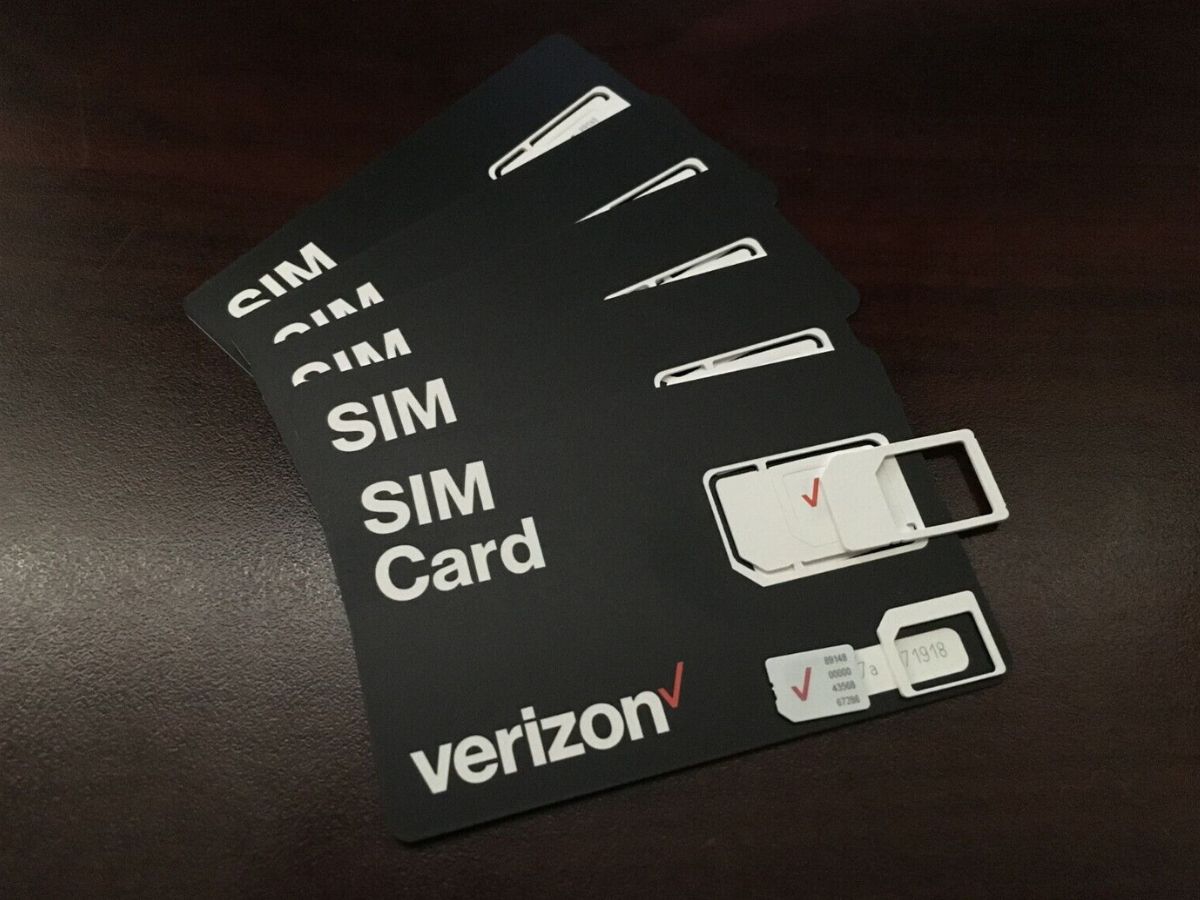Introduction
Welcome to the future of mobile technology! In our fast-paced digital world, staying connected is essential, and advancements in wireless technology have made this easier than ever. One of the most groundbreaking innovations in recent years is 5G technology. With its incredible speed and low latency, 5G promises to revolutionize the way we use our smartphones and interact with the world around us.
But what exactly is 5G? How does it differ from its predecessors, and how will it impact the capabilities of our smartphones? In this article, we will explore the world of 5G technology and delve into the exciting realm of 5G smartphones.
Before we dive into the details, let’s quickly understand what 5G is. Simply put, 5G stands for the fifth generation of wireless communication technology. It builds upon the foundation laid by 4G LTE but offers significant improvements in terms of speed, capacity, and reliability.
Unlike previous generations, which primarily focused on delivering faster download speeds, 5G takes connectivity to a whole new level. It boasts download speeds of up to 10 gigabits per second, which is at least 100 times faster than 4G. This incredible speed means that we can download and stream high-definition content, play graphics-intensive games, and access data-intensive applications with minimal lag.
However, 5G is not just about speed; it also offers lower latency than its predecessors. Latency refers to the time it takes for data to travel from one device to another. With 5G, latency is reduced to as low as 1 millisecond, enabling real-time communication and instantaneous responses. This opens up exciting possibilities for technologies like autonomous vehicles, remote medical procedures, and virtual reality experiences.
Now that we have a basic understanding of what 5G is, let’s explore the numerous benefits this technology brings to the table and how it translates into the realm of smartphones.
What is 5G?
5G, or the fifth generation of wireless technology, represents a significant leap forward in mobile connectivity. It is designed to meet the ever-increasing demands of our interconnected world by delivering faster speeds, lower latency, and greater capacity. With 5G, we can expect a new level of performance and efficiency that will transform our daily lives and pave the way for exciting innovations.
So, how is 5G different from its predecessors? The main differentiating factor lies in the underlying technology and the capabilities it brings. Unlike 4G LTE, which primarily operates on low-frequency bands, 5G utilizes a wider range of frequencies, including high-frequency bands known as millimeter waves.
These millimeter waves enable faster data transmission by carrying more information at once. However, they have a shorter range and are more susceptible to obstacles like buildings and trees. To overcome this limitation, 5G relies on a dense network of small-cell stations, each capable of covering a smaller area. This approach ensures consistent coverage in urban areas and high-density environments.
One of the key features of 5G technology is its incredible speed. With download speeds of up to 10 gigabits per second, we can download movies, apps, and large files in a matter of seconds. Streaming high-definition videos and playing online games will be seamless, with virtually no buffering or lag. This opens up a whole new world of possibilities for content consumption and entertainment on our smartphones.
Along with speed, 5G also brings significantly lower latency compared to previous generations. Latency refers to the delay between sending a command and receiving a response. With 5G, the latency can be as low as 1 millisecond, enabling real-time interactions and instantaneous responses. This is crucial for applications like augmented reality (AR) and virtual reality (VR), where even the slightest delay can disrupt the user experience.
Another noteworthy aspect of 5G is its ability to accommodate a massive number of connected devices simultaneously. This is crucial in an era where the Internet of Things (IoT) is expanding rapidly, with everything from smart homes to connected cars relying on a stable and robust network connection. With 5G, we can expect improved connectivity and better overall performance, even in highly congested areas.
In summary, 5G is a revolutionary wireless technology that offers blazing-fast speeds, ultra-low latency, and enhanced capacity. It paves the way for exciting new applications and services, from autonomous vehicles and remote surgeries to immersive AR and VR experiences. The 5G revolution is here, and it promises to reshape the way we live, work, and connect with the world around us.
Benefits of 5G Technology
The advent of 5G technology brings forth a multitude of benefits that will transform many aspects of our lives. Let’s explore some of the key advantages that this revolutionary technology brings:
1. Lightning-fast Speeds: One of the most significant benefits of 5G is its incredible speed. With download speeds up to 10 gigabits per second, we can say goodbye to long buffering times and enjoy instant access to high-quality content. Whether it’s streaming 4K videos, downloading large files, or playing online games, the speed of 5G ensures a seamless and lag-free experience.
2. Ultra-low Latency: Latency refers to the delay between a command being sent and a response being received. With 5G’s ultra-low latency, as low as 1 millisecond, interactions will be instantaneous. This is particularly important for real-time applications like autonomous vehicles, remote surgeries, and augmented reality experiences, where even the slightest delay can have significant consequences.
3. Improved Capacity: 5G can handle a vastly increased number of connected devices compared to previous generations. This enhanced capacity is crucial in enabling the growth of the Internet of Things (IoT) ecosystem, where an increasing number of devices, from smart home appliances to connected cars, rely on stable and reliable network connections.
4. Enhanced Reliability: 5G technology offers improved reliability by reducing the chances of network congestion and dropped connections. This ensures a stable and consistent network experience, even in crowded areas or during peak usage times.
5. Transformative Applications and Services: 5G opens up a world of possibilities for innovative applications and services. Industries like healthcare, transportation, manufacturing, and entertainment can leverage the speed and low latency of 5G to develop technologies such as remote surgeries, autonomous vehicles, smart factories, and immersive virtual reality experiences.
6. Economic Growth and Job Creation: The deployment of 5G networks creates new opportunities for economic growth and job creation. As the demand for 5G technology increases, it will drive investments in infrastructure, research, and development, spurring innovation and creating employment across various sectors.
7. Bridging the Digital Divide: 5G has the potential to bridge the digital divide by providing high-speed connectivity to underserved areas. Its ability to transmit data over longer distances, compared to millimeter wave frequencies, ensures that even remote and rural regions can access reliable and fast internet connections.
These are just some of the many benefits that 5G technology brings to the table. As these networks continue to expand and evolve, we can expect even more transformative advancements that will shape the future of communication and connectivity.
What is a 5G Smartphone?
A 5G smartphone is a next-generation mobile device that is equipped with the capability to connect and communicate using 5G technology. Unlike traditional smartphones that primarily rely on 4G or earlier generations, 5G smartphones take advantage of the advancements offered by the fifth generation of wireless communication.
At its core, a 5G smartphone is similar to any other smartphone. It combines the functionality of a mobile phone, internet access, and a range of applications into a single device. What sets it apart is its ability to access and utilize 5G networks, offering users faster download and upload speeds, lower latency, and enhanced overall performance.
A key component of a 5G smartphone is the modem or chipset, which allows it to communicate with 5G networks. This modem is designed to support the unique frequencies and technologies associated with 5G, enabling the smartphone to harness the full potential of this advanced wireless technology.
5G smartphones also feature multiple antennas to improve connectivity and signal reception. These antennas are specifically designed to work with 5G frequency bands, ensuring optimal performance and coverage. Additionally, manufacturers often incorporate advanced radiofrequency technologies to enhance signal strength and minimize interference.
The hardware of a 5G smartphone is typically optimized to handle the increased data transfer rates and processing requirements associated with 5G. This includes powerful processors, ample RAM, and high-capacity storage, allowing users to seamlessly multitask, run demanding applications, and enjoy immersive media experiences.
On the software side, 5G smartphones are designed to take advantage of the unique capabilities of 5G networks. They incorporate enhanced network management and optimization features that ensure efficient use of network resources for a better overall user experience. Additionally, 5G smartphones provide compatibility with the latest applications and services that are developed to leverage the speed and low latency of 5G networks.
It is important to note that while a 5G smartphone is capable of connecting to 5G networks, it is also backward compatible with previous generations, allowing users to access 4G, 3G, and even 2G networks when 5G coverage is not available. This ensures continuous connectivity in areas where 5G infrastructure is still being deployed.
In summary, a 5G smartphone is a mobile device that harnesses the power of 5G technology to deliver faster speeds, lower latency, and improved connectivity. With a 5G smartphone, users can experience the next level of mobile communication and take advantage of the transformative benefits that 5G networks offer.
Key Features of 5G Smartphones
As the world transitions to the era of 5G technology, smartphones are evolving to offer a range of key features that maximize the potential of these advanced networks. Let’s explore some of the key features that set 5G smartphones apart from their predecessors:
1. 5G Connectivity: The most obvious and defining feature of a 5G smartphone is its ability to connect to 5G networks. These smartphones are equipped with the necessary hardware, such as 5G modems and antennas, to deliver lightning-fast download and upload speeds, low latency, and improved overall network performance.
2. Faster Download and Upload Speeds: With 5G technology, 5G smartphones offer significantly faster download and upload speeds compared to previous generations. This means that users can download large files, stream high-definition content, and upload media in a matter of seconds, providing a seamless and efficient mobile experience.
3. Lower Latency: 5G smartphones benefit from the ultra-low latency of 5G networks, enabling near-instantaneous communication and response times. This is incredibly important for real-time applications like online gaming, video conferencing, and augmented reality, where delays can hinder performance and user experience.
4. Enhanced Performance: To support the advanced capabilities of 5G networks, 5G smartphones boast powerful processors, ample memory, and high-speed storage. This allows for smooth multitasking, quick app launches, and efficient handling of data-intensive tasks.
5. Improved Battery Efficiency: While 5G technology offers faster speeds, 5G smartphones are designed to optimize battery life and efficiency. Manufacturers employ various techniques, such as advanced power management features and more energy-efficient components, to ensure that users can enjoy the benefits of 5G connectivity without sacrificing battery life.
6. Advanced Camera Capabilities: Many 5G smartphones come equipped with cutting-edge camera systems that leverage the power of 5G networks. These smartphones often feature high-resolution sensors, improved image processing capabilities, and advanced AI algorithms, enabling users to capture stunning photos and videos with incredible detail and clarity.
7. Immersive Multimedia Experience: With 5G, 5G smartphones enable users to enjoy immersive multimedia experiences like never before. From streaming high-quality 4K videos to playing graphics-intensive games in real-time, the combination of 5G connectivity and robust hardware delivers a superior entertainment experience.
8. Greater Storage Capacity: To accommodate the increasing size of media files and apps, 5G smartphones offer ample storage options. With large storage capacities or the ability to expand storage through memory cards, users can store more photos, videos, and files on their 5G smartphones without worrying about running out of space.
9. Enhanced Security Features: 5G smartphones often incorporate advanced security features to protect user data and privacy. These features may include facial recognition, fingerprint sensors, encryption technology, and secure app ecosystems, ensuring that users can trust their 5G smartphones with their sensitive information.
These key features highlight the transformative capabilities that 5G smartphones bring to the table. With faster speeds, lower latency, and a range of advanced functionalities, 5G smartphones unlock a new era of connectivity and mobile experiences.
5G Smartphone Brands and Models
As the demand for 5G smartphones continues to grow, many smartphone manufacturers have released models that support 5G technology. Let’s explore some of the prominent brands and models that offer 5G connectivity:
1. Apple iPhone 12: The Apple iPhone 12 series, including iPhone 12, iPhone 12 mini, iPhone 12 Pro, and iPhone 12 Pro Max, supports 5G connectivity. These smartphones feature powerful A14 Bionic processors, high-resolution OLED displays, and advanced camera systems, providing a seamless and immersive 5G experience.
2. Samsung Galaxy S21: The Samsung Galaxy S21 series, including Galaxy S21, Galaxy S21+, and Galaxy S21 Ultra, are 5G-enabled smartphones. These devices boast impressive displays, powerful Exynos or Snapdragon processors (depending on the region), versatile camera systems, and a range of innovative features that leverage the capabilities of 5G networks.
3. Google Pixel 5: The Google Pixel 5 is an Android smartphone that supports 5G connectivity. It features a clean and intuitive user interface, a high-quality camera system with advanced computational photography capabilities, and the seamless integration of Google services, offering a premium 5G smartphone experience.
4. OnePlus 9 Pro: The OnePlus 9 Pro is a flagship smartphone from OnePlus that offers 5G capabilities. It features a powerful Qualcomm Snapdragon processor, vibrant AMOLED display with a high refresh rate, advanced camera system developed in partnership with Hasselblad, and fast charging technology, making it an appealing choice for those seeking a 5G smartphone.
5. Xiaomi Mi 11: The Xiaomi Mi 11 is a 5G-enabled smartphone that combines high-end specifications with an attractive price point. It features a Snapdragon chipset, a stunning AMOLED display, a versatile camera setup, and fast charging capabilities, delivering a compelling package for users seeking a 5G smartphone without breaking the bank.
6. Huawei P40 Pro: The Huawei P40 Pro is a 5G smartphone from Huawei that offers a range of innovative features and capabilities. It features powerful Kirin processors, a high-quality camera system co-engineered with Leica, stunning OLED displays, and a sleek design, ensuring a premium 5G experience.
7. Sony Xperia 1 II: The Sony Xperia 1 II is a flagship smartphone that supports 5G connectivity. It offers a unique 21:9 CinemaWide display, powerful Snapdragon processor, professional-grade camera system with Zeiss optics, and features like 360 Reality Audio, providing a distinctive 5G smartphone experience, particularly for multimedia enthusiasts.
These are just a few examples of the many 5G smartphone brands and models available in the market. As 5G networks continue to expand, more and more smartphone manufacturers are introducing 5G-enabled devices, ensuring that users have a wide range of options to choose from to experience the benefits of 5G technology.
How to Use a 5G Smartphone
Using a 5G smartphone is similar to using any other smartphone, but there are a few key considerations to maximize your experience with 5G technology. Here are some steps to get started with and make the most out of your 5G smartphone:
1. Check for 5G Coverage: Before using your 5G smartphone, it’s important to check if 5G coverage is available in your area. Contact your mobile service provider or visit their website to determine the availability of 5G networks in your region. Keep in mind that 5G coverage may vary, so make sure to check specific areas where you will be using your smartphone most frequently.
2. Enable 5G Connectivity: To take advantage of 5G connectivity, ensure that 5G is enabled on your smartphone. Go to the settings menu, navigate to the network settings or cellular settings, and ensure that 5G or the appropriate 5G band is selected. If your smartphone supports automatic network selection, it will connect to the available 5G network once in range.
3. Update Firmware and Apps: Keep your smartphone’s firmware and apps updated to ensure compatibility with 5G technology. Manufacturers often release software updates that optimize performance, address bugs, and improve overall functionality. Likewise, app developers release updates that incorporate 5G capabilities, so ensure that you have the latest versions installed.
4. Utilize 5G-Optimized Apps: Explore and download apps that are specifically optimized for 5G technology. Many streaming services, video conferencing apps, and online gaming platforms offer enhanced features when used on 5G networks. These apps can take advantage of the faster speeds and lower latency provided by 5G, delivering a seamless and immersive experience.
5. Take Advantage of Enhanced Media Features: Use your 5G smartphone to enjoy media in high definition and with minimal buffering. Stream 4K videos, download high-resolution movies and games, and leverage cloud storage to access your media files from anywhere. With 5G, you can experience faster download and upload speeds, providing a more enjoyable and convenient media experience.
6. Explore Augmented Reality (AR) and Virtual Reality (VR) Experiences: With the low latency and fast speeds of 5G, augmented reality and virtual reality applications become more immersive and responsive. Discover AR apps that overlay digital information on the real world, or explore VR games and experiences that transport you to virtual realms. The 5G technology in your smartphone will enhance the realism and interactivity of these experiences.
7. Monitor Data Usage: Due to the potential for faster download and upload speeds, be mindful of your data usage when using a 5G smartphone. Streaming high-quality videos and downloading large files can consume significant amounts of data. Consider monitoring your data usage and switch to Wi-Fi networks whenever possible to avoid exceeding your mobile data limits.
8. Keep an Eye on Battery Life: The increased capabilities of 5G smartphones may have an impact on battery life, especially when utilizing high-speed connectivity. Optimize your smartphone’s battery life by adjusting settings like display brightness, background app refresh, and location services. Additionally, having a portable charger or power bank can ensure that you stay connected even when on the go.
By following these steps, you can make the most out of your 5G smartphone and enjoy the benefits of faster speeds, lower latency, and enhanced connectivity that 5G technology brings.
5G Smartphone Plans and Pricing
As the demand for 5G smartphones continues to rise, mobile service providers have introduced a range of plans specifically tailored to support 5G connectivity. Here are some key considerations when exploring 5G smartphone plans and pricing:
1. Network Service Providers: Start by researching the network service providers in your area that offer 5G coverage. Check their websites or reach out to their customer service to understand their 5G network availability, coverage maps, and plan options.
2. 5G Data Plans: Check the available 5G data plans offered by service providers. These plans typically offer higher data allowances and faster speeds compared to traditional 4G plans. Consider your data usage habits and select a plan that aligns with your needs.
3. Unlimited Data Options: Many providers offer unlimited data plans for 5G smartphones. These plans can be beneficial for users who consume large amounts of data, stream media, or play online games frequently. However, be aware that some providers may have fair usage policies that may slow down speeds after a certain threshold.
4. Bundle Offers: Some providers may offer bundle deals that include a 5G smartphone along with a specific data plan. These bundles often provide cost savings and can be a convenient option for users looking to upgrade to a 5G smartphone while also securing a suitable plan.
5. Family Plans: Consider family plans if you have multiple members in your household who are also using 5G smartphones. Family plans typically offer shared data allowances, discounted rates for additional lines, and other benefits that can help save costs.
6. Device Payment Options: If the upfront cost of a 5G smartphone is high, check if your provider offers device payment options. This allows you to spread the cost of the device over a set period, making it more manageable for your budget.
7. Contract Length and Flexibility: Consider the contract length associated with the 5G smartphone plan. Some plans require a longer-term commitment, while others offer more flexibility with month-to-month options. Assess your needs and decide which option suits you best.
8. International Roaming: If you travel frequently, check if your provider offers competitive international roaming rates for 5G data usage. Having the ability to use 5G connectivity while abroad can be advantageous for staying connected and utilizing the benefits offered by 5G networks in different regions.
9. Compare Pricing: Finally, compare the pricing of different 5G smartphone plans from various providers. Consider factors such as data allowances, network coverage, additional benefits or perks, and customer service reputation. This will help you find the best plan that combines both affordability and the features you require.
Remember, as the 5G network expands, providers may introduce new plans and pricing structures. Stay informed and regularly review your options to ensure you are getting the most value from your 5G smartphone plan.
5G Smartphone Availability
5G smartphones have become increasingly popular, and their availability has expanded as 5G networks continue to roll out worldwide. Here are some key points to consider regarding the availability of 5G smartphones:
1. Global Availability: 5G smartphone availability varies by country and region. Major markets such as the United States, China, South Korea, and parts of Europe have seen significant deployments of 5G networks, resulting in a wider selection of 5G smartphones from various manufacturers.
2. Network Rollouts: The availability of 5G smartphones is closely tied to the deployment progress of 5G networks. Mobile service providers gradually expand their 5G coverage, prioritizing urban areas and high-density regions. As 5G infrastructure continues to expand, so does the availability of 5G smartphones.
3. Manufacturer Support: Many smartphone manufacturers have released 5G models to meet the growing demand for 5G connectivity. Major brands like Apple, Samsung, Google, OnePlus, Huawei, and Xiaomi offer a range of 5G smartphones across different price points and specifications. It is important to research and check with local retailers or service providers to determine the availability of specific 5G smartphone models in your region.
4. Service Provider Offerings: Availability of 5G smartphones can also depend on the offerings provided by mobile service providers. Different providers may have partnerships with specific smartphone manufacturers or offer exclusive deals on certain 5G smartphone models. Checking with local service providers can provide insights into the availability and options for 5G smartphones.
5. Market Competition: As the demand for 5G smartphones grows, market competition among manufacturers and service providers intensifies. This competition can lead to more options and availability of 5G smartphones at various price points. Keeping an eye on market trends and new product releases can help identify the availability of the latest 5G smartphone models.
6. Online and Offline Retailers: Availability of 5G smartphones can also depend on the distribution channels and retail partners of smartphone manufacturers. Online marketplaces, brand websites, and offline retail stores play a crucial role in making 5G smartphones accessible to customers. Researching authorized resellers and checking official manufacturer websites can provide information on where to purchase 5G smartphone models.
7. Upgrading Existing Devices: If 5G smartphones are not readily available or affordable, it is worth considering the option of upgrading your existing device. In many cases, users may have the ability to upgrade their smartphone by adding a 5G-compatible modem through an expansion card or module, pending compatibility and support from the manufacturer.
As 5G networks continue to expand, the availability of 5G smartphones is expected to increase. Staying up to date with the latest developments in your region and researching the offerings from different smartphone manufacturers and service providers can help you find the right 5G smartphone that suits your needs.
Conclusion
5G technology is ushering in a new era of connectivity, and 5G smartphones are at the forefront of this revolution. With blazing-fast speeds, ultra-low latency, and enhanced performance, these smartphones unlock a range of possibilities for users worldwide.
By harnessing the power of 5G networks, 5G smartphones facilitate faster download and upload speeds, enabling seamless streaming, gaming, and content consumption. The low latency of 5G ensures real-time interactions, making applications like augmented reality and virtual reality more immersive and intuitive.
Major smartphone manufacturers, including Apple, Samsung, Google, and Huawei, have introduced 5G-enabled models to meet the growing demand. Coupled with various network plans and pricing options offered by mobile service providers, users have more choices and flexibility when choosing a 5G smartphone that suits their preferences.
While 5G smartphone availability varies by region and is closely tied to the deployment progress of 5G networks, the expansion of 5G infrastructure continues at a rapid pace. It is important to check with local service providers, retailers, and manufacturer websites to determine the availability of specific 5G smartphone models in your area.
As 5G technology evolves, it will continue to transform industries, enhance communication, and redefine how we interact with the digital world. With the power of 5G in your hands, you can stay connected like never before and enjoy the benefits of instantaneous communication, seamless media experiences, and innovative applications.
Embrace the future of connectivity with a 5G smartphone, and unlock a world of possibilities right at your fingertips.







